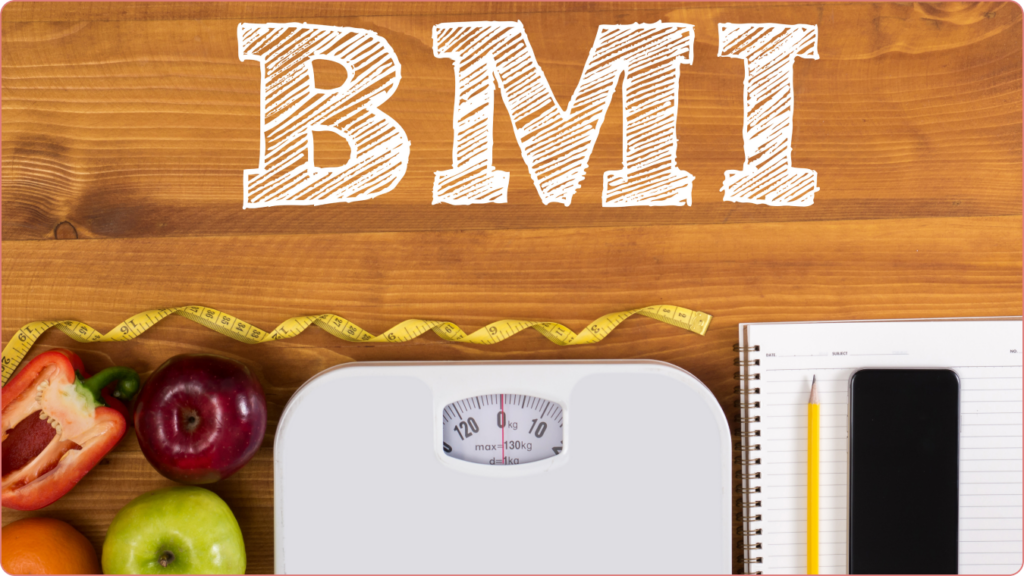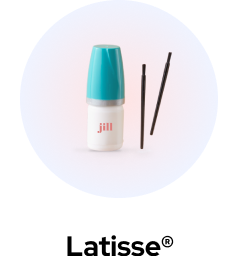First thing – you’re an awesome person and worthy of happiness, regardless of your weight. There are likely a few reasons why you’ve decided to take the first steps in losing weight: whether it is due to health, appearance, a new challenge or some other reason, we’re glad you’ve found us.
We created this guide to help ourselves too – several folks on the team are on their own weight loss journeys and having a simple, easy to understand starting point is helpful for us and for you. Note: we only cover off topics pertaining specifically to health – appearance based weight loss goals are valid (‘I want to look ‘good’ naked), but so filled with mental health complexities, ethics, and unhealthy societal expectations that we’re leaving that conversation for another day.
So where to start? What are your options? How can you maximize your chances for success?
There’s four simple steps to our ultimate weight loss guide, applicable regardless of who you are and why you’re wanting to lose weight.
Step 1: Determine if you need to lose weight, and how much
Before attempting to lose weight, you should have an honest discussion with your healthcare provider. They’ll take some body measurements such as your height, weight, and waist circumference to determine which weight category you currently fall in. They’ll ask you your goals, and may propose an ideal weight or set of measurements to aim for. They may also recommend blood work depending on your medical history.
Let’s go over some common measurements you’ll likely hear about and will be tracking.
BMI
BMI stands for body mass index. This measurement helps determine your current BMI weight category but please note that the BMI measurement is not perfect. The BMI categories are not an accurate representation of adults over 65, those under 18 years, very muscular individuals, athletes, those who are extremely tall or short, lactating or pregnant individuals, or those with ascites or edema. BMI can over or underestimate body fat and it does not take gender or ethnicity into account.
What does this mean? You are multifaceted, as are your measurements – so BMI should be taken as a single data point along with others.
You can calculate your BMI by dividing your weight in kilograms by your height in metres squared. Here’s an online calculator. The table below outlines the different categories, as well as splitting between a few different ethno-groups.

Why does BMI matter?
Higher BMI is associated with metabolic disease and an increased risk of obesity-related complications. These generally include diabetes, high blood pressure, heart disease, and high cholesterol. The higher your BMI, the more beneficial it will be for you to lose weight.
Waist circumference
Waist circumference is another measurement used to help determine your general risk of complications from obesity. If your BMI is from 25 – 35, a waist circumference measurement is recommended by Obesity Canada. If you fall within the “at-risk” waist circumference range, you’ll likely be pushed up one BMI category. For example, if you’re Southeast Asian and have a calculated BMI of 22.5 (considered healthy) but a waist measurement of 80 cm as a woman, you’d be placed into the overweight category.
In order to properly measure your waist circumference, here’s a few suggestions:
- Stand up and measure around your waist, just above your hipbones. This may or may not be right where your bellybutton is – use your hip bones as your reference point.
- Ensure the tape measure is parallel to the ground, all the way around your waist.
- Keep it snug, but not squeezing into your skin
- Breath out, then take the measurement. Don’t suck in!
Here’s the at-risk ranges for both men and women, as well as different ethno-groups.

How do I figure out a realistic goal or ideal weight?
This can be a tough one to answer. There are many formulas that have been created to help us estimate our ideal body weight, based on a variety of inputs but this is focusing specifically on a theoretical, math based answer. For many, the ideal and realistic weight that they should am for is one that is not only going to give them the best chances for lowering potential medical issues, but also one that is reasonable for their lifestyle. The ideal body weight for a female athlete at 5 foot 2 is going to be different from a female office worker with two kids at the same height. That being said, it’s helpful to at least have a starting point.
This is a good calculator to get you started – then you can bring this information to your medical team and talk through, based on your diet, lifestyle and other goals, whether it’s reasonable to aim for.
Step 2: Exhaust all options before considering medications
It’s important to exhaust all non-drug options to losing weight such as dietary adjustments, exercise, and possible medication changes (some meds can cause weight gain such as antidepressants) before starting the medication path. If you feel that a certain medication is causing you intolerable weight gain, it’s worth having a discussion with your medical team about potential alternatives. Here’s a few ways you’ve heard about to help lose weight.
Increase your physical activity
Obesity Canada recommends that patients engage in moderate to vigorous aerobic exercise for 30-60 minutes on most days of the week. This amounts to at least 150 minutes per week, which can be met if you exercise for 30 minutes x 5 days per week. Resistance training can help maintain weight or slightly increase muscle mass as well. This can also include increasing some of the non-exercise activities that you do everyday – extend the walk you take with your dog, park further away in the grocery parking lot, add some music and dance while you vacuum.
Alright, but what is aerobic and resistance exercise?
Aerobic exercise includes any type of exercise that increases your heart rate and breathing such as brisk walking, swimming, and biking. You can tell if you’re at moderate intensity if you can talk but can’t sing. You can tell if you’re at vigorous intensity if you can barely talk like when you’re running or playing a fast-paced sport.
Resistance exercises help strengthen your muscles and bones. Muscle-strengthening exercises include gardening, weight-lifting, and push-ups or sit-ups. Bone-strengthening exercises include yoga and walking.
A 3-5% decrease of your original body weight is usually achieved through lifestyle changes like increasing your activity levels. If you have a very high BMI, your medical team may recommend a combination of lifestyle changes and medication for a more significant weight reduction from the get-go. Want to learn more about our medically supervised weight loss program? Click here.
Dietary Modifications
Obesity Canada recommends changing what you consume, both eating and drinking, to help reach your weight loss goals. A good rule of thumb: limit the amount of carbohydrates and highly processed foods, increase fibre and protein, and add plenty of fruits and vegetables in your diet.
It’s important to realize that our goal is to establish a long term lifestyle change through changing how we eat. Aim to create a plan that is sustainable and fits with how you live. While a short-term, extreme calorie-restricted diet may achieve weight reduction in the short-term, the diet may not be sustainable over time. A registered dietitian can help you create a diet plan that helps you meet your individual goals based on your medical history.
Step 3: Try weight loss medication
If you’ve tried all non-drug options without much success or you have a significantly high BMI, it might be time for weight loss medication.
Most medical teams will recommend a weight loss medication if your BMI over 27, especially if you have other obesity-related complications like diabetes.
What prescription medication options are available?
The best medication option for you will depend on your pre-existing medical conditions, allergies, medications, and personal preference for specific products (ie. oral pills vs injectables).
Here are two common medications that are used for weight loss in Canada:
1. Saxenda (Liraglutide)
2. Contrave (Naltrexone/bupropion)
Saxenda (Liraglutide)
Saxenda works by mimicking the actions of glucagon-like peptide-1 (GLP-1), which is a hormone in our body. GLP-1 slows the emptying of your stomach and makes you feel more full. With a reduced appetite and food cravings, you are less likely to eat and more likely to reach your weight loss goals. Saxenda is an injectable solution and like all meds, comes with potential side effects. Common short-term side effects from this medication include nausea, vomiting, diarrhea, and constipation.
Saxenda should not be used by patients who are pregnant, have a personal or family history of medullary thyroid cancer, and/or a personal history of multiple endocrine neoplasia syndrome. These questions should be covered in your chat with your medical team.
Contrave (Naltrexone/bupropion)
The exact mechanism of Contrave is not known – the two ingredients in this medication seem to act on two areas in the brain. These areas include the hypothalamus, which plays a role in appetite regulation, and the mesolimbic dopamine circuit, which plays a role in our reward system. The combined effects of these two medications means your appetite is decreased, helping you to increase your chances of meeting your weight loss goal.
Contrave is an oral pill, usually taken twice daily. Common side effects include nausea, constipation, headache, vomiting, dizziness, insomnia, dry mouth and diarrhea.
Contrave should not be used for patients who are pregnant, have uncontrolled high blood pressure, long-term opioid use, seizure disorder, anorexia, abrupt discontinuation of alcohol /benzodiazepines/barbiturates/anti-epileptic drugs, use of other bupropion containing products, and during/within 14 days of using monoamine oxidase inhibitors.
Which drug should I choose?
If your medical team determines that both medications are safe, you can use either for your weight loss journey. Here are some factors to keep in mind when choosing a medication:
- Are you comfortable with injecting yourself every day? Or would you prefer taking a pill?
- Do you deal with depression, cravings, and/or smoking? If so, Contrave may be better suited for you since it can also help with mood and smoking cessation.
- Do you have other chronic conditions such as diabetes, high blood pressure, obstructive sleep apnea, and/or PCOS? If so, Saxenda may be better suited for you.
- Do you tend to drink alcohol, and/or eat highly greasy foods (like french fries, fatty cuts of meat)? If so, Saxenda is the better option.
Note: when starting either Saxenda or Contrave to help with weight loss, you’ll slowly increase the dose of the medication until you reach your maintenance phase of the medication. This means you start at a low dose and gradually increase your dose until you reach a maximum. If you have bothersome side effects, your medical team may decide that a lower maintenance dose is appropriate for you. At the lower dose, you can maximize the benefits and minimize the side effects that you may experience from the drug.
Saxenda versus Contrave: which to choose?
| Parameter | Saxenda | Contrave |
|---|---|---|
| Convenience (dosage form) | ||
| Pre-existing conditions | ||
| Depression, cravings, smoking cessation | ||
| Diabetes, high blood pressure, obstructive sleep apnea, PCOS | ||
| Storage |
Please note that the table above is to help you make your decision if both Saxenda and Contrave have been approved as safe and effective for you by your HCP. An “
Step 4: Maintain your weight
Obesity management has two phases. The first phase focuses on losing weight. The second phase focuses on maintaining your weight after weight loss. Both are challenging but doable!
After you lose weight, your body may try to regain what it has lost. With prescription weight loss treatment, we usually aim for weight loss of 5 – 10%, which is beneficial to your health. Once you’ve reached that ideal goal weight, whatever you decide upon with your medical team, it’s important to continue your lifestyle changes and regular follow-up appointments to help maintain your hard fought wins. So – combining moving more, being careful about what you consume and taking prescription medication (where appropriate) means you can expect to lose 15% of your original body weight in a year in a healthy way.
There you have it – four simple steps to help guide your weight loss journey. We hope to join you!













